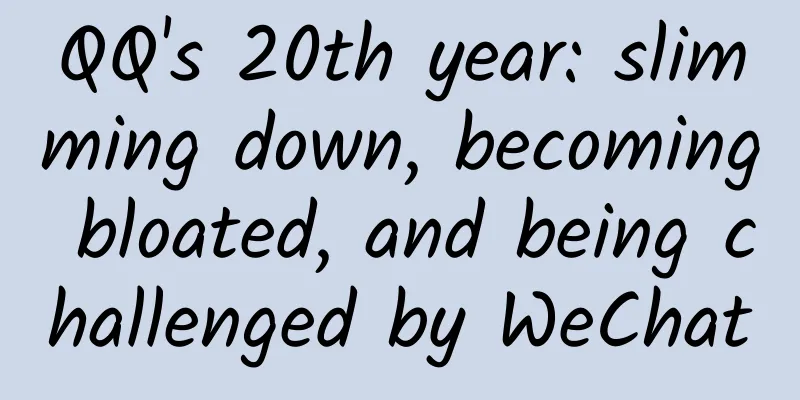The flagship phone S6 may not be able to save the Samsung Note 5?

|
This week, Samsung released preliminary second-quarter earnings figures, with full results not expected until later this month. Samsung on Tuesday forecast a decline in operating profit for the second quarter, or April-June period, to about 6.9 trillion won ($6.13 billion), down more than 4% from the same period last year. The forecast is lower than analysts' expectations, which were based on forecasts from 33 analysts compiled by Bloomberg News that Samsung's second-quarter operating profit would reach 7.2 trillion won. Samsung's profits have been falling since late 2013 as competition has intensified in an increasingly saturated smartphone industry. However, Samsung Electronics' second-quarter operating profit increased by 15.38% from the previous quarter's 5.98 trillion won, thanks in part to Samsung's new flagship Galaxy S6 and Galaxy S6 Edge. The new flagship S6 shoulders a heavy responsibility Last year, Samsung's Galaxy S5 performed poorly, with sales of only 12 million units in the first three months after its release, which is reportedly lower than the 16 million units sold by the previous flagship model, the Galaxy S4. In April this year, Samsung released two new flagship phones. Unlike the previous two Galaxy phones, the S6 received a lot of praise. Samsung has also been pinning its hopes of turning losses into profits on the sixth generation of flagship smartphones. In view of the tepid performance of the Galaxy S5 launched in 2014, Samsung made many changes and innovations on the S6. The cool curved screen, the main screen resolution of 2560×1440 pixels, the combination of glass and metal materials... all of these made the Samsung S6 a model that attracted much attention in the industry. Samsung also hoped to break through the bottleneck period of its business, so Samsung expected the S6 to achieve record sales. After its release, it received many positive reviews from all sides, so some institutions expected that the sales of S6 would reach 70 million this year. Some analysis institutions also said that S6 is expected to surpass iPhone 6 series to become the best-selling smartphone, and the sales volume is expected to reach 50 million by the end of the year. However, in fact, the sales of these two products did not meet Samsung's expectations. S6 sales did not meet expectations According to data from market research firm Counterpoint, from April 10 to April 30, Samsung sent a total of 10 million S6s to distributors and retailers, of which about 6 million eventually reached consumers. This figure is higher than the sales of Galaxy S5 in the same period last year, but not as good as the sales of iPhone 6 and iPhone 6 Plus in the same period. According to Counterpoint data, in April, iPhone 6 sales climbed to the top, followed by iPhone 6 Plus in second place. Galaxy S6 ranked third, while the more innovative S6 Edge ranked fourth. Given that the new generation of Galaxy phones was launched on April 10, such rankings were expected. In view of the pessimistic situation, Samsung lowered its annual sales forecast for the S6 series from 50 million units to 45 million units in May this year. Recently, Deutsche Bank also changed its forecast for S6 shipments, predicting that Samsung S6 sales are expected to reach 45 million units by the end of this year. Other securities firms have also lowered their second-quarter S6 shipment forecasts from 21 million units a month ago to 18 million units. Samsung expects operating profit to fall 4 percent to 6.9 trillion won in the second quarter ended June as sales of the Galaxy S6 slump, marking seven straight quarters of shrinking profits. Mixed feelings: S6 can't save Samsung According to Yonhap News Agency, they have confirmed from "senior Samsung officials" that the global sales of Samsung S6 and S6 Edge have exceeded 10 million units one month after their launch. However, this sales performance did not break the previous sales record of Samsung S5 and S4, which reached the same sales volume in 25 days and 27 days respectively. Although the sales data is lower than market expectations, the Galaxy S6 series of mobile phones are still the leaders in the Android mobile phone market. Samsung is still the first choice for users of Android mobile phones, but given the conquest of the iPhone 6 and the rise of the Chinese smartphone army, Samsung may not have an easy time in the second half of 2015. Samsung regained market leadership in the United States in its first full month of sales of the Galaxy S6, according to a new report from market research firm Kantar Worldpanel Comtech, with Samsung accounting for 55 percent of Android smartphone sales in the three months to May, compared with 52 percent in the three months to April. In major sales markets around the world, Samsung performed better in the US smartphone market thanks to the launch of S6, with Galaxy S6 becoming the third best-selling smartphone in the US, second only to iPhone 6 and S5. In the European market, demand for iPhone 6 was very strong, with iPhone 6 taking the lead in the smartphone markets of Britain, Germany, Italy and France. According to IDC data, global smartphone shipments reached 375.2 million units in the fourth quarter of 2014. Samsung and Apple 's smartphone shipments were evenly matched, with Samsung shipping 75.1 million units and Apple shipping 74.5 million units, ranking first and second. Among the first-tier mobile phone manufacturers, other manufacturers maintained a strong growth momentum. Only Samsung's smartphone shipments fell by 11% year-on-year. In the Chinese market, which is a must-win for all companies, Samsung has also been losing ground. According to IDC data, Samsung's market share in China in the fourth quarter of 2014 has dropped from 20% at the beginning of the year to 8%, and it has been overtaken by Chinese manufacturers for three consecutive quarters, with Huawei, Lenovo and Xiaomi all ahead of it. Samsung's e-commerce channel layout in China is not ideal. Coupled with the catch-up of domestic brands, some of Samsung's offline retail stores have also seen a decline in performance. Supply issues affect sales Although there are still disagreements about the specific sales of S6, there is basically a consensus on why the sales of S6 are not satisfactory: Samsung’s "marketing mistake." Analysts have lowered their expectations for the highly anticipated S6. Yoo Eui Hyung, an analyst at Dongbu Securities in South Korea, said, "The market's sales expectations for the S6 are too high. Analysts are lowering their expectations for S6 shipments this year because the Edge is in short supply and other versions are not selling well because they are not much different from the iPhone 6." It is reported that when Samsung estimated the sales of S6 and S6 Edge, it believed that the shipment ratio of the two was 4:1, but in the actual sales process, it encountered the dilemma of S6 backlog and S6 Edge in short supply. Although Samsung adjusted its plan in time, it was limited by the production capacity of S6 Edge and failed to effectively seize the "window period" of S6 sales, and has not been able to recover in subsequent sales. "Galaxy S6 sales momentum is obviously not as strong as people expected," said Greg Roh of HMC Investment Securities. He pointed out that production delays may have weakened the sales of S6 Edge phones. The more fundamental problem may be that given the high cost and small profit margin of the S6 Edge, Samsung may not have intended to mass-produce it. Samsung's dilemma is clear. Compared with Apple's iPhone 6 series, which has maintained a strong sales momentum since its launch a year ago, the Samsung S6, which was once expected to challenge the iPhone 6, has gradually lost its luster. Can we pin our hopes on Note 5? The weak supply of Galaxy S6 has caused Samsung to lose the window of opportunity to increase its product sales, and the next generation of iPhone from its old rival Apple will be released in September, which has put a lot of pressure on Samsung. Market rumors say Samsung plans to launch a larger S6, reportedly a 5.5-inch Galaxy S6 Edge, while the current S6 Edge is 5.1 inches. Samsung has already filed a trademark application for the "S6 Edge+" with the US Patent Office. In the eyes of many, this new phone is unnecessary because Samsung is about to launch the Galaxy Note 5. Although Samsung Electronics has not yet announced the details of the Note 5, it is expected that this tablet phone will follow the design of the Galaxy S6 and Galaxy S6 Edge. Recent news broke that this tablet phone will use a 5.9-inch 2K (or 4K) display, a 4100mAh battery and an upgraded octa-core processor. In view of the news that Apple's iPhone 6s does not seem to have seen a significant improvement, Samsung's tablet phone still has a chance in the high-end mobile phone market. It is reported that Samsung Note 5 will be released at the IFA electronics consumer show in Germany in September this year. Perhaps Galaxy S6 Edge+ and Note 5 can be a lifeline for Samsung and stop the downward trend in the second half of this year. However, Samsung's usual strategy of gaining sales momentum through the release of new phones cannot fundamentally solve the problem. The promotional slogan of Samsung S6 is "Next is now", but almost every time, Samsung places its hopes on the future. As a winner of Toutiao's Qingyun Plan and Baijiahao's Bai+ Plan, the 2019 Baidu Digital Author of the Year, the Baijiahao's Most Popular Author in the Technology Field, the 2019 Sogou Technology and Culture Author, and the 2021 Baijiahao Quarterly Influential Creator, he has won many awards, including the 2013 Sohu Best Industry Media Person, the 2015 China New Media Entrepreneurship Competition Beijing Third Place, the 2015 Guangmang Experience Award, the 2015 China New Media Entrepreneurship Competition Finals Third Place, and the 2018 Baidu Dynamic Annual Powerful Celebrity. |
<<: VR and the Internet of Things will drive future growth of smartphones
>>: The most admired luxury brand: luxury advanced experience first
Recommend
What will Apple TV look like in China? Not worth looking forward to
At Apple's Spring Festival new product launch...
WeChat Reading Product Analysis Report
This article would like to take WeChat Reading as...
Thanksgiving marketing tactics, take it and thank you!
The annual Thanksgiving is coming again! Is the p...
National subsidies for new energy vehicles will be adjusted: market structure changes
"The industrialization of electric vehicles ...
Among the "carcinogenic foods" that are circulating wildly in the circle of friends, which one can really cause cancer?
Do you often see this kind of articles in your ci...
Activision Blizzard CEO was nearly fired, but Tencent and others helped him get out
At the end of July last year, not only did the new...
Practical techniques for obtaining effective traffic in early Internet startups!
Practical methods for obtaining effective traffic ...
Xbox One system detailed analysis: the complete Windows 8
A few months ago, several news outlets reported th...
"Stabilizing the overall situation" Infiniti continues to accelerate the localization process
In April this year, the first thing Lu Yi did whe...
Will 80% of power battery companies be eliminated? The shortage of money makes the industry even worse
In 2020, only 20-30 of all power battery companie...
Prepare for Double Eleven, direct e-commerce holiday marketing plan!
This article shares all aspects of direct-operate...
Fission is complete, how to do refined user retention work
At the end of the previous article "There se...
Analysis of user marketing activity system!
There are many introductions to marketing activit...
Exclusive analysis of the secrets to increasing the amount of creative advertising material from 0 to 1!
1. The core logic of delivery As an agent, what s...
"Poet Immortal" Li Bai was not dazzled, it turns out that he could really "produce purple smoke"!
Recently, many netizens captured a wonderful scen...









